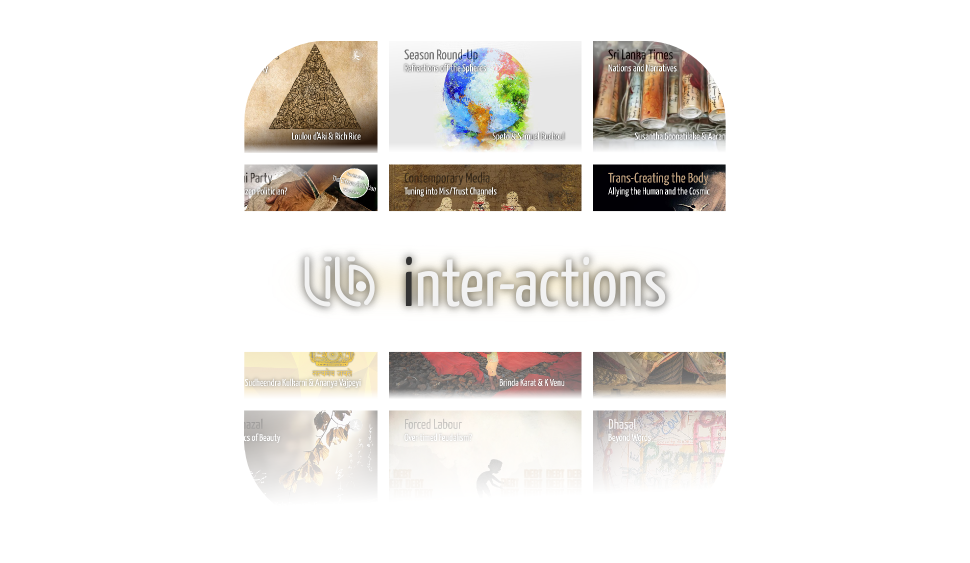“And then he told them, ‘Go into all the world and preach the Good News to everyone’.” Nothing new, and nothing really good, it seems, as one observes in a glimpse the global spread of what was once a fundamental belief in and for inclusion. As traditions of spiritual wisdom undertook their translocal destiny, splitting and excluding appeared a more sound option than bridging across cultures and society. But when inclusion becomes exclusion, the play of cultures becomes a power play and across-within groups, the light and pervasive inter-connection of cultures disappears from the surface. A certain limited spirit of the market rises, as no one any longer believes that truly innovative creations can guarantee the elaboration of equitable communities. Advertisement is brought in, responding to its favourite assumption: the insurmountable struggle of identical siblings. As we, thus, believe in the very veil of appearances, all means become valid to permit this fight to the finish – terror prevails well beyond Bethlehem and Peshawar, in a world culture preferring success over connective spread. But the News reached us nonetheless, serenely eternal and regularly awaited, like the Santa of our children. Thus, even though we walk through the valley of the shadow of death, we will fear no evil, for this Santa-Clause, an open, always incomplete proposition, promises rewards to those who believe beyond the seen. This week on LILA Inter-actions, Saurav Das attempts an introspective exploration into the functions of advertisement for our belief cultures, and he points towards the possibility of a non-competing practice of the commercial. Lijo Stephen Chacko reaffirms today’s need for beliefs, but a belief connecting communities through service, faith and loyalty, as real action truly supplants mere talk.  |
|
Once upon a time, in school, we were told that human communities gathered up, fundamentally, towards the primary objective of ensuring the survival of each of their members. That was the benefit for the citizen of the ‘social contract’, achieved at the cost of accepting that authority would be given only to a few. Continents have been conquered, cities and states have sprouted, growing a relative and imperfect, but unquestionably improving respect for the dignity of human lives. In a word: our collective, initial wager has proved successful. Or so it seemed. What happened, then, on the 9 August of this year, when the proudest democracy of our world brought its death row onto the streets? Membership to the club of the ‘Rogue States’ is clearly a fluctuating business nowadays, so where is the world citizen of our age expected to feel safe, between a school ground of Peshawar and a sidewalk of a city suburb of Missouri? Perhaps those echoes, those coincidences, those firsthand testimonies reaching us from all directions are meant to meet and combine, contributing to charting the informal code of an internationally connected citizenry determined to hold to the initial promise of the participatory democracy. In the last decade, the popular protests are still calling for our attention, but it has welcomed in its ranks the support of the new, pan-global educated class, armed with its online presence, becoming what may be the first forms of a worldwide, translocal collective of citizen politicians. But beyond their respective fights, these movements already enact the change they advocate: transforming constitutions and institutions becomes the temporary objective; urging the permanent attention demanded of every society member is its long-lasting accomplishment. This week on LILA Inter-actions, Will Simcoe goes from Thailand back to the USA to bring the principles of the nation back to its reality. Meghna Chandra bridges the USA and India, observing the relevance of Ferguson for social quests in the Subcontinent, and she reflects on the mode of the protest as a rich medium of expression for the new forms of awareness rising today.  |
![]()

![]()